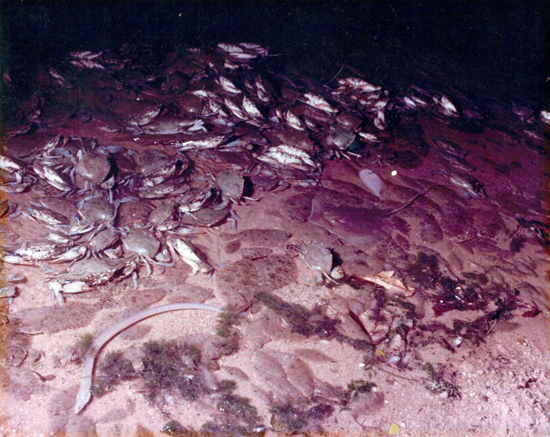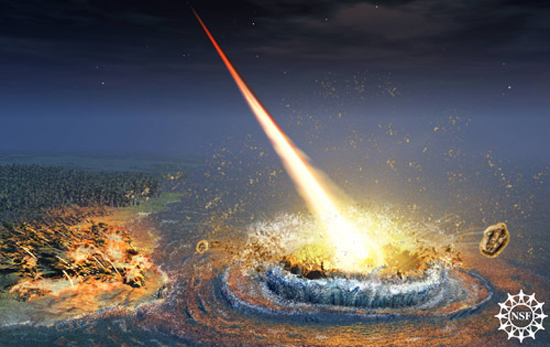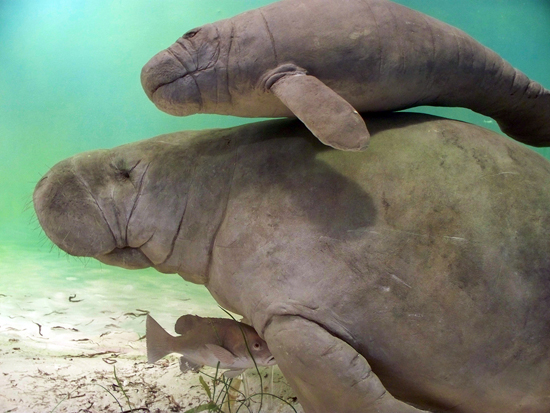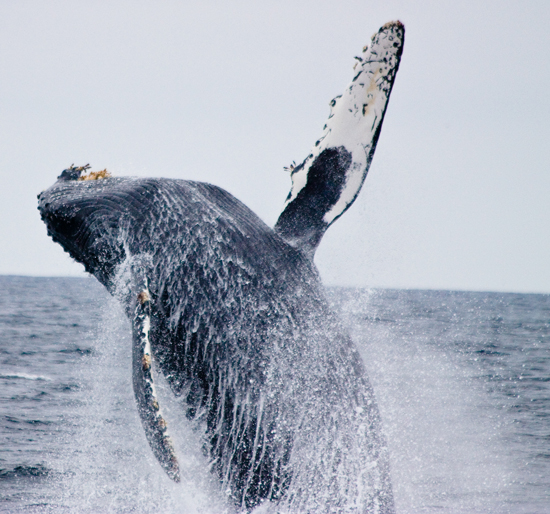Four rare Chesapeake Bay “oddities” to learn about this leap year
While Chesapeake folklore doesn't mention Feb. 29, we decided to take this opportunity to mention a few Bay “oddities."
For most of us, a leap year simply means adding an extra day to the schedule in February. But in other cultures, leap years are symbolic. In the British Isles, folk tradition says that women must propose marriage in leap years, whereas in Greece, it’s bad luck for couples to get married during leap years.
While Chesapeake Bay region folklore does not mention February 29, we decided to take this opportunity to mention a few Bay “oddities”: natural occurrences that only come along every so often – just like leap years.
1. Crab jubilees

(Image courtesy Alpaca Farm Girl)
Like other Chesapeake Bay species, blue crabs need oxygen to survive. But when oxygen levels are too low, blue crabs come out of the water and onto land, an event known as a crab jubilee.
Despite the term “jubilee,” the event is not a celebration. Crab jubilees occur only when water quality in the Chesapeake Bay is extremely poor. Typically, a combination of hot weather, offshore winds and algae blooms fueled by nutrient runoff quickly deplete oxygen levels in the water, sending crabs and other critters running toward the shore for air.
In Mobile Bay, Alabama, a similar event known simply as the jubilee occurs regularly and has become a community celebration, renowned for an opportunity to easily catch seafood.
See more photos of a crab jubilee.
2. Bolides and impact craters

(Image courtesy Nicolle Rager-Fuller/National Science Foundation)
Thirty-five million years ago, a bolide (an asteroid-like object) crashed into what is now the lower tip of the Delmarva Peninsula, creating a 55-mile-wide crater that’s the largest known in the United States. It’s called an impact crater because the deep depression impacted the lay of the land: influencing the course of the region’s rivers and determining the eventual location of the Chesapeake Bay. As sea level rose and fell over the next few million years, the Chesapeake Bay fluctuated between dry land and a shallow coastal sea.
3. Visits from Chessie the manatee

(Image courtesy psyberartist/Flickr)
In 1994, the first Florida manatee ever was spotted in the Chesapeake Bay. This mammal, which can stay underwater for as long as 12 minutes, typically does not travel into waters below 68 degrees Fahrenheit. But this particular manatee, appropriately named Chessie, seems to occasionally prefer the cold. Chessie, which biologists recognize by distinct markings on his body, visited the Bay again in 2001 and 2011. Chessie even swam all the way to New England, the northernmost known point to ever receive a manatee visit.
Manatees are endangered because of habitat loss and harmful human activities, making a Chessie sighting all the more rare. Also, while most wild manatees live for 8 to 11 years, Chessie is at least 20 years old!
4. Humpback whale sightings

(Image courtesy Ken-ichi/Flickr)
North Atlantic humpback whales feed in polar waters in the summer and mate in warm waters in the winter. But each winter, a handful of humpback whales mate in the Chesapeake Bay instead of the tropics. This year, 30 whales were counted off the coast of Virginia Beach – much higher than the average of five or six. An unusually mild winter attracted the whales to these Chesapeake waters.
Luckily, humpback whales are friendly and curious; they’re known to surface beside boats and put on a show for lucky whale watchers. Care for something even more rare? If you’re daring enough to stick your head in the water, you may be able to hear a mating song. Biologists can determine where a whale comes from by listening to its song. For example, Hawaiian humpback whales sing a different song than those from Virginia.

Comments
There are no comments.
Thank you!
Your comment has been received. Before it can be published, the comment will be reviewed by our team to ensure it adheres with our rules of engagement.
Back to recent stories